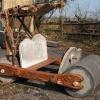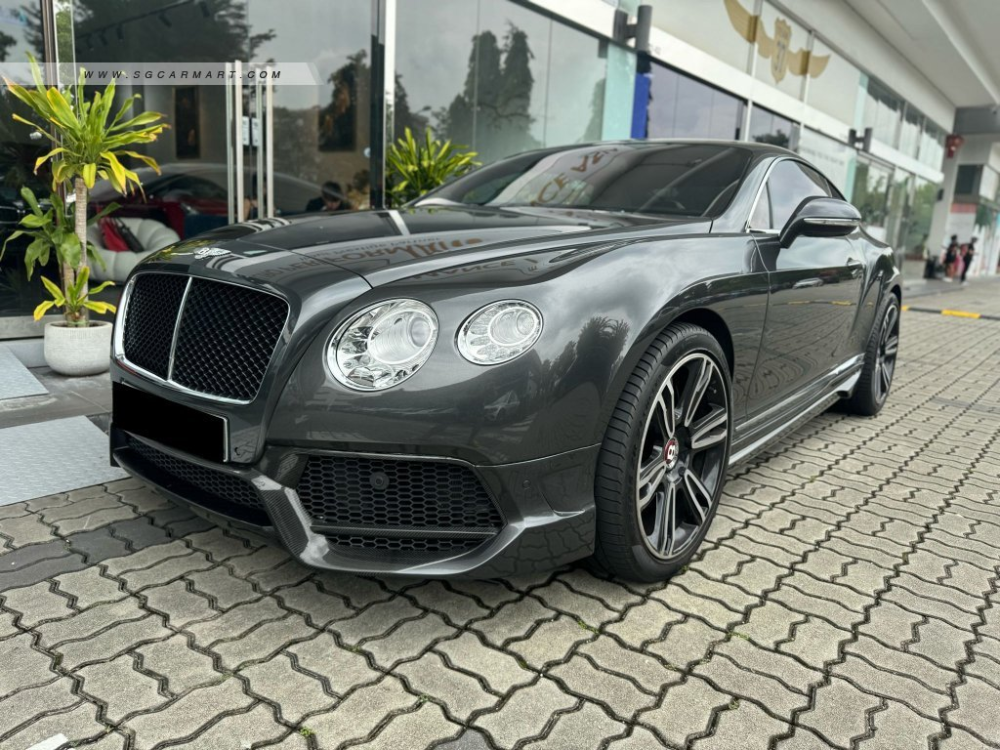Search the Community
Showing results for 'Continental'.
-
Some people no idea this here beautiful day cafe is a little bit like the hotel continental. Our women are getting empowered to the point of solo travel, although it appears most of those that get in trouble appear to be from the same ethnic base. Such as pregnant woman shot in the belly by AK. Interesting. Personally know a gal who soloed to Mexico. Siao charbo that one. 🤭 how st do a history piece that lead to an analytical result. Singaporean women are used to safety because of Singaporean men. When said men are in short supply, the derived conclusion is the correlation that the women’s’ safety goes down. Romania….you know what was it before it was named for its conquerors Roma? Dacia. what happened to Dacia and the Dacians? They were eliminated completely…you know Gaza is a joke for the Roman obliteration of the Dacians. Massacres, mass graves, burning towns and villages, all in a days work of the Roman in Romania. I would not say the best of Rome were there. not that we would know anything about Eastern Europe or South East Asia, we just hick mud people to uplift the ego of the Eirean/ Aryan. Condolences to her family. 😥
- 100 replies
-
- 2
-

-
- singaporean
- woman
-
(and 2 more)
Tagged with:
-
United Airlines better still, in continental USA domestic flight, they often run into over-booking situation then will start offering cash to any passenger that willing to give up their seat and fly off on a later flight This was years ago when my former job required occasional overseas trips, not sure if it's still the situation now.
- 140 replies
-
- 1
-
.png)
-
- sia
- fly no where
-
(and 1 more)
Tagged with:
-
Good Feedback from an obvious Jag passionate. I am Merk Fan boy for a Good many years who Juzz happens to pass thru here. Seriously Conti do have a Bad Name Locally ,cos many moved from the usual Sushi/Kimchi Derivatives. From those to the Continental makes ,not onli one needs to adjust their mindset as well as the financial outlay . There’s No doubt the Contis are better but it does constitutes a higher price as well ,one thing ppl must understand ,the Europeans are pretty Anal in their Maintenance Schefule.u needs to service what the manual tells u. But Seriously after around the Block for a quite while ,it’s not gonna cost u an arm & a Leg per Se. After the warranty period is over ,there’s plenty of wshop who Specialise in a certain Brand,,for dis case Jaguar . Many Technician from the A.D wdrkshop Will ventured out on their own. Dat will save u Quite a bit & if u manage to source yr own spares from the many Stockist around ,further saving can be made Some Tips,Many on-Line Carousell Stockist ,u can check them out too. Do remember all Stockist are not created Equal. Then finally try to get a wshop who’s willing to take up such task(many are not willing) As u can see Owning a Conti Marques probably will onli cost u a bit more ,if u try to navigate around . Yr mentioned of Full Service Record dun realli work Locally,I gives all of mine to the Dealer & he was Mmm ok,then probably chuck one side. But Do send to an expert for a P.P.I will work wonders for u.
- 109 replies
-
Source: https://www.motor1.com/reviews/690621/2025-porsche-macan-ev-review/ Welcome to the future. The future of Porsche, at least, and Audi, too, eventually. Underneath that whisp of cladding and all the black vinyl is the new, all-electric Porsche Macan, the first product built upon Volkswagen Group's Premium Platform Electric. PPE is set to deliver a new generation of high-end electric Porsches and Audis to boot. After a day of hustling a prototype of the new Macan around California roads, I'm here to say that the future is looking bright. Bright, but also perhaps a bit murky. While this is an EV Macan, it won't be called "Macan EV" or "Macan Electric." It's just called Macan, and while it is set to enter the market in early 2025, the internally combusted Macan isn't going away. Yes, you'll have your choice of not one but two models built on two different platforms, both called Macan, at dealerships soon. Confusing? A smidge, yeah, but this is very definitely the one you'll want. The Next Generation When it comes to first acts, it's hard to do better than the Taycan. Porsche's first EV made the transition from luscious concept to desirable production machine smoother than most. It'll be a hard act to follow, but from what I just experienced behind the wheel, the new Macan won't be lingering in the second-album doldrums. Let's get some of the critical figures out of the way first – or as many as we can, at least. Porsche is still playing its cards pretty close to its chest on this one, so we're not quite dealing with a full deck. The electric Macan's PPE platform will deliver a battery pack with a capacity of around 100.0 kilowatt-hours, with a range that Porsche says will test "well beyond" 500 kilometers on the European WLTP test. That equates to somewhere north of 310 miles of range, a significant boost over the Taycan's current maximum rating of 246 miles. However, that is on the rather more challenging EPA test cycle. With all that uncertainty, it's difficult to say what the Macan's US, EPA-rated range will be, but somewhere in the 275 to 300 mile range seems reasonable. And how about power? All Macans will be all-wheel drive with a dual-motor setup, but three different power levels will be available. Porsche has yet to figure out just how to brand this thing, but you can imagine it arriving in dealers as something like a Macan 4, 4S, and Turbo to follow current Taycan branding. Porsche again doesn't have specific power figures available, but I was told the top-shelf Turbo trim would manage around 450 kilowatts. That's just a tick over 600 horsepower. The top-shelf Macan GTS today offers 434 hp. That is a healthy jump, to say the least. That power will surely come with a considerable increase over the GTS's roughly 4,400-pound curb weight, too, but Porsche hasn't confirmed a figure. And, just to round out all the TBDs, we don't have pricing on the electric Macan either, but don't be surprised if it starts above the Macan GTS, which currently has an MSRP north of $85,000. Monster Macan Now that we've established all the unknowns let's dig into the known: This thing is a monster. I drove a variety of flavors of electric Macan on a beautiful day hustling through the Malibu hills, but I started in a model that Porsche's engineers would only describe as "top" trim. That meant all the power, all the handling goodies, and the air suspension, lacking only the rear steering option. So, that meant somewhere north of 600 hp put to the road through two electric motors. Unlike on Taycan, the rear motor no longer has a two-speed transmission, but it is augmented by an active rear differential with torque vectoring. I started my day, as so many SoCal drivers do, stuck in traffic, dawdling along over some questionably paved stretches of asphalt. My first impressions were of a car that's remarkably compliant and comfortable for commuting. It's quiet, too, as you'd expect an EV to be, but given this was such an early prototype, I'd expected some squeaks and rattles or some degree of excessive road noise. There wasn't a hint. The roads cleared as I got out of town. As the asphalt started snaking, I was able to pick up the pace. Dropping the Macan into Sport mode delivers an immediate and noticeable change in character. The throttle response immediately sharpens, the suspension likewise stops being so soft and starts getting real. After being nearly lulled to sleep in earlier gridlock, I confess I was not expecting the new Macan to be such a powerhouse in the turns. The harder I pushed, the better it responded, really coming alive when I twisted the mode dial over to Sport Plus. Soon I was comfortable enough to have the all-season Continental tires at both axles squealing in complaint through the corners. The Macan did remarkably well at managing the grip from those increasingly overtaxed tires. Yes, the Macan tended to understeer, but in the sort of safe, predictable way that makes sense for a car like this. That understeer wasn't terminal by any means. Turning the wheel a little more and adding a little throttle resulted in the nose coming around every time, that rear differential doing its magic. Oversteer was easy to provoke, and the Porsche's various stability management systems were kind enough to let me enjoy it. In hours of overly aggressive driving, tires squealing, I only felt one significant intervention. And the power? Addictive. On Sport Plus, the throttle is incredibly sharp, the kind of delivery that may cause neck injuries for passengers not receiving fair warning before you step on it. The power requires some modulation as you accelerate out of tight corners, but that rear differential does a lot of work to keep the thing moving in the right direction. I later sampled cars with the rear-steering system, and that just added more agility to the mix. It's paired with an even sharper variable steering ratio to make the car feel almost too eager to get to the apex, a feeling that is utterly addictive. And the less-powerful electric Macans? While they certainly lacked the eye-opening thrust of that top Turbo (or whatever Porsche calls it), they're still properly quick. Their accelerative performance should be easily on par with any of the internally combusted Macans. The feeling across the range there is equally good when it comes to braking. The brake pedal has confidence-inspiring firmness yet still enough travel to comfortably work through traffic without complaint from back-seat passengers. That feel, though, is entirely synthetic. The electric Macan uses a brake-by-wire pedal system that, behind the scenes, relies on electric regenerative braking as much as possible before seamlessly calling in some help from the physical brakes. Thanks to the Macan's 800-volt battery system, the car can pull a lot of juice from those motors during regen, meaning you'll only need the physical brakes under serious decel. If and when the brake performance is degraded due to temperature or the like, a Porsche engineer told me the pedal feel will modulate to give feedback to the driver. But, on a hard, hot day of charging through the California hills, I never felt a hint of fade, simulated or otherwise. Sadly, though, there's one fly in this ointment: one-pedal driving. Porsche is still sticking to its guns: If you want to slow down, you'll need to move your foot from accelerator to brake. I can't argue with the engineers that it may be the more efficient way to drive, but then you also can't argue that PDK transmissions are quicker and more efficient than manuals, and yet Porsche is quite proud to offer those to its sports car enthusiasts. Plenty of electric car enthusiasts prefer one-pedal driving, myself very much included, and as Porsche gets more serious about EVs, it'd be nice if the company acknowledged that. After all, adding a high-regen mode is a heck of a lot simpler than adding a third pedal.
-
See various videos like all give good reviews.
-
Sources: https://www.motor1.com/news/675922/michelin-pilot-sprot-4s-vs-continental-extremecontact-sport02/ The Michelin Pilot Sport 4S has long been regarded as the standard for high-performance summer tires. They offer very good performance on the track and work well on the street. Not to be outdone, Continental recently developed the ExtremeContact Sport 02 series and set the Michelin Pilot Sport 4S in its sights. So which one is better? That's what Tyre Reviews decided to find out. The two biggest knocks on the Michelin Pilot Sport 4S are its price and age. Michelin introduced the Pilot Sport 4S more than eight years ago, which is an eternity for tire technology. It's also one of the most expensive performance tires, costing more than $1,700 for a set of four. Knowing this, Michelin also introduced the Pilot Sport S 5 this year, which is not a direct replacement but an evolution designed for today's high-performance hybrid and electric vehicles. But before you dismiss the Pilot Sport 4S as old and overpriced, know that it still wins every comparison test, and if it doesn't, it's in the top three. Right off the bat, the Continental ExtremeContact Sport 02 is cheaper by about $200 a set. However, while that price difference is significant, the performance difference between the old ExtremeContact Sport and the Pilot Sport 4S was always minimal. In fact, the only real advantage the Pilot Sport 4S had in its favor was a better feel and steering response, two things Continental says it improved with the new ExtremeContact Sport 02.
- 9 replies
-
- 4
-

-
- continental
- michelin
-
(and 2 more)
Tagged with:
-
Nice but I think they should stick to more luxury models, like homage to Bentley for instance.. E.g.....Bentley Continental GT 4.0A V8
-
You mean like 1930s Germany wanting Poland as a buffer zone between itself and Russia, and conveniently “liberating” Sudetenland, German-speaking areas of Czechoslovakia, and then most of continental Europe? I find the parallels hard to ignore…
-
Hi, Anyone used these tyres before and how do you rate them? What tyres will you changed if it's down to these 3 choices? Btw am talking about Europe made ones.
-

JR Pass - HUGE PRICE INCREASE! Any advice?
Lala81 replied to teomingern's topic in Travel & Road Trips
Just booked scoot. 3.8k for roughly same timings as sq though arriving back sg past midnight. But boh pian. 5k is too much for a non trans continental flight. Reach on Sat 4pm. Leaving on a Sunday 6pm. Just have to make do.- 500 replies
-
- 1
-

-
@Westguy You are somehow correct. Let me give my quick opinion on Opel or even some continental makes on this: 1) Opel (Vauxhall) is a bread and butter car in UK, just like VW in Germany, Hyundai in S Korea and Toyota in Japan. If Opel cars are no good, nobody in UK will buy them but new car sales are still strong in UK. Ford has been declining steadily. 2) SG is hot all year round (easily more than 30*C). If your workplace and home is open car park, don't buy a continental car. 3) Continental car brands need to "exercise" regularly. That's why you need to go MY to reach at least 120 km/h for at least 5 minutes so that transmission can use the highest gear (7 speed DSG, 7 G tronic, 9 G tronic, 8 EAT and whatnot). Most transmission breakdown prematurely because the higher gears are never used. 4) If you drive in SG which is at least 70% in stop and go traffic, dont buy a continental car. 5) Continental cars do not like traffic jams! E.g stuck in traffic at Causeway in the hot sun for 3-4 hours. Although radiatior/fans are working under the bonnet, it is still very hot...... Slowly shortening the life of the engine, transmission, hoses, plastic parts, turbo, compressor under the hood. 6) So far Opel e.g Mokka does not have as many electronics on touch screen compared to Mercs or BMW... That is a good thing because if it malfunctions, $$$$ to be taken from your bank account especially the branded continental makes. Sometimes more electronics means more headache. 7) Opel if i am not wrong, has 5 Star EURO NCAP rating. 😎 If you drive any continental car like a taxi or PHV, guarantee got problem even before 2 years. 9) Sometimes after a long drive (more than 25 minutes in the hot sun), it would be good to open the bonnet to let the engine and turbo cool faster once you reach a covered car park and switch off engine . 10-15 minutes will do if you can spare the time. 10) Of course parts will always be more expensive than Japanese cars like Vios, City Altis Vezel etc. If you really want to count your $$$, stick to a Japanese or Korean car may be just buy a Perodua Bezza. My 2 cents worth. I owned both Japanese and continental cars based on personal opinion. It is how you take care of the car. Don't flame me.
-
BYD Atto 3 now comes with super mild facelift. Addition of Black color option . Build Your dreams deleted to BYD. Screen in 15.6 inch. Tires are Continental.
- 268 replies
-
- 2
-

-
- byd atto 3
- byd
-
(and 4 more)
Tagged with:
-
Was this incident filmed in a bad context? Or was the Volkswagen driver attempting to evade parking fees? Watch the following video here: What Happened? When approaching the carpark gantry to exit, the Volkswagen Golf driver stopped right before the gantry arm and alighted from his car. He then proceeds to push the gantry arm such that it automatically lifts. Allowing him to get into his car and escape paying a sum of $5? It's a little blur but it's definitely less than $10. . Update #1 - 14/4/2022 Many netizens have pointed out that this might be a case of the gantry operator instructing the VW driver to lift it up due to a spoiled gantry. Well, that may be possible. What do you think? Netizens' Comments Maybe? Or there might be lots of honking around the area which prompted the contributor to film the video. 🤷♂️ Well, that's if there is enforcement actions taking against him. ========= Be the first to get the latest road/ COE news, and get first dibs on exclusive promos and giveaways in our Telegram SGCM Community. Join us today!
- 7 comments
-
- 1
-

-
- volkswagen
- golf
-
(and 2 more)
Tagged with:
-
The German brand aims to be the most progressive tire company by 2030. Source: https://www.motor1.com/photo/6120327/continental-conti-greenconcept-revealed-at-munich/ Almost all car brands are on the road to sustainable mobility, emissions-free motoring, and the likes. Even tire companies, such as Continental, have also committed to becoming the most progressive tire company by 2030 in terms of ecological and social responsibility. To serve this goal, Continental introduced its Conti GreenConcept at the Munich Motor Show, amid the bevy of electric vehicles showcased at the relocated Internationale Automobil-Ausstellung (IAA). The German tire company also supplied sustainable tires for the VW ID. LIFE concept city car. The Conti GreenConcept, however, isn't limited to just presenting a new tire alone. The concept embodies the goal to minimize resource consumption across every link in the tire's value chain. That said, the tire concept is sustainable down to the very core, including sourcing and procurement of raw materials, even up to the ways to extend the tire's service life. According to Continental, more than half of the raw materials used are either recycled or from renewable sources. A good 35 percent of the Conti GreenConcept also uses renewable materials. Among the bio-materials used are natural rubber from dandelions, silicate from the ash of rice husks, and vegetable oils and resins – all leading to a significant reduction in materials based on crude oil. The Conti GreenConcept also uses 17 percent recycled materials, including reclaimed steel and recovered carbon black, as well as polyester from recycled plastic bottles for the tire's casing. Called the ContiRe.Tex technology, the company will be gradually rolling this out by 2022. Lastly, the rubber used for the Conti GreenConcept tread compound is 100 percent Taraxagum natural rubber, which allows multiple retreading. The green-colored tread baseline marks the transition from tread to casing. Undamaged casings can be reused several times.
- 10 replies
-
- 4
-

-
- continental
- eco tyre
-
(and 4 more)
Tagged with:
-
Most popular now is Continental GP5000.
-
It’s Quite a Breadth of Fresh Air for u to start dis Topic. Rather the usual Sedate Rant ,u see over here. Yr Decision dun have to Relied on the Number of years Left ,the Cost of the Repairs or Maintenance or the Numbers of Down time days. i See dat as a Peace of Mind for u. Dun Forget Yr Car will developed issues if u are not aware of some known problem weather it’s Low mileage or otherwise Many owners dun have dat Mechanical sympathy when dealing with Metalogy,it might have been Broken before u got it & dun forget there’s Wear & Tear issue too. . Yes,it’s a Merk ,Should have Less issues compare to other Continental makes but Do remember there WILL be issue(s). Step forward & make yr Decision with Confidence. U have done yr Diligence..
-
I am those that cannot sleep on a plane, even for a cross continental flight also difficult for me to sleep. I am a very light sleeper. With wifi is the most easy to pass time. You must be those that can knock off easily on a plane or anywhere
-
Yah. I had met this type and was on a cross continental flight to Europe.
-
High five for Citroen's new medium SUVhttps://www.stuff.co.nz/motoring/road-tests/109909709/high-five-for-citroens-new-medium-suv Citroen has always been more keen on quirky people movers than high-riding SUVs. It's a very Continental thing. Except that it's becoming less of thing as time goes on, which is why the French brand has finally created something that competes in New Zealand's most popular single new-vehicle segment: medium SUVs. So say "salut/gidday" to the new C5 Aircross, a European Car of the Year nominee that's heading here in September. Perhaps because it's come so late to the SUV party, Citroen reckons the C5 Aircross answers buyer concerns about the relative lack of comfort and practicality in the latest fashion-led soft-roaders. It's based on the same front-drive platform as the Peugeot 3008, but it's 55mm longer in the wheelbase (and stretched by the same amount overall). The idea is that the C5 Aircross is more spacious on the inside than your average medium SUV, more comfortable with Citroen's new-generation Advanced Comfort Seats (15mm surface foam, mattress-like filling and more memory foam underneath) and especially more practical. The rear seats are split 40/20/40, all three sections slide individually and the backrests can be adjusted for rake, meaning luggage capacity ranges from a generous 580 litres to a very impressive 720 while maintaining five chairs. Not exactly luxurious for rear occupants in the latter position, but hey - you can do it. It's all very people-mover-like. You can see what they've done there. There's just one high-specification model for NZ, powered by a version of Peugeot-Citroen's familiar 1.6-litre turbo-petrol with 132kW/250Nm. That's more grunt than you get in the top-line 3008 petrol models (121kW/240Nm) and it's matched to an eight-speed automatic gearbox. The comfort ethos continues in the suspension with Citroen's Progressive Hydraulic Cushion (PHC) dampers, a unique system originally developed for the brand's rally cars that has extra baby dampers at the top and bottom of the main units to smooth out the up-and-down movements, while maintaining good control in the mid-range. So at a projected price just under $50k, you're potentially getting a larger, more powerful and better equipped SUV (stuff like adaptive cruise will likely be standard on the Kiwi C5 Aircross) for a little less money than the equivalent 3008. It's expected to account for at least of half of Citroen's Kiwi volume when it comes on stream in September, although with no price-leading model and the fact that it's a new thing for a niche brand, it'll still be a fairly small concern. The local distributor reckons the 3008 will still outsell the C5 Aircross three-to-one. At Citroen's international media launch in Morocco. Marrakech in fact, from the chaos of the city where you're constantly dodging battered Peugeot 504 utes, out into wide open spaces and around the foothills of the Atlas Mountains. An ambitious drive-location and obviously one chosen to showcase the squishy underpinnings and long cruising legs of the C5 Aircross. The so-called "180" (that's horsepower) version of this engine is a gem: perky and punchy, even if it gets a little raucous up top. The eight-speed transmission is seamless and smooth at a cruise, although it can get a bit fidgety when you ask the big questions with the throttle. The roads in Morocco are famously bad in places: narrow, ruts and plenty of big potholes. A tough test then. As with the PHC-equipped C4 Cactus we tested in NZ late last year, we found the C5 Aircross chassis had a tendency to occasionally crash into broken tarmac at urban speeds, but cruised serenely on the open road, combining the right degree of classic Citroen "waft" with good body control. It's a ride-handling combination that suits the medium-SUV C5 Aircross much better than the city-oriented C4 Cactus. And don't mistake comfort-oriented dynamics for a sluggish feel: the C5 Aircross is literally light on its feet, with a kerb weight of just 1430kg. We ventured off-tarmac a little, although take note that as with the sister 3008, the C5 Aircross is front-drive only. Kiwi models will likely ride on 19-inch wheels, but if you're willing to step down to 18s you can have Grip Control as an option - a drive-mode selector that adjusts traction control and transmission calibration for low traction surfaces. What really stands out? Character: a more fluid low-speed ride would be welcome, but overall the Citroen's deliberately non-sporty demeanour and strong visual character are hugely refreshing. The interior ambience is pretty chill as well - lounge-like in its styling and high in equipment. The controls are pleasingly simple but there's hi-tech on board, including a neat virtual instrument panel. The choice of materials is more in the cheap-and-cheerful mould, though: the textures are interesting but a lot of the plastic is pretty hard. It's nothing like as premium as the touchy feely environment of a 3008. Why would I buy it? Because it proves that medium-sized SUVs don't have to be generic boxes. Because it really does blend SUV style with a touch of people-mover practicality. Or because Citroen is doing some pretty cool stuff these days that's full of character without being self-consciously quirky, and you want in.
- 6 replies
-
- 2
-

-
- citroen
- c5 aircross
-
(and 5 more)
Tagged with:
-
I am eyeing Japanese car, not affected by the routes to SG. 😁 Continental brands maybe because they travel to Middle East using the Suez Canal.....
-
Michelin Pilot Sport 5 Improves On The Best Tire In The World
alphapunk2 replied to kobayashiGT's topic in Tyres and Rims
Anyone tried the Continental Premium Contact 7 yet? Doesn't seem that easy to get in SG yet, only see Sport Contact 7 for sale. -
It's the new Lamborghini SUV! Meet the Urus https://www.topgear.com/car-news/suvs/its-new-lamborghini-suv-meet-urus Lambo's long-awaited return to the SUV sector is here. Full details on 641bhp Urus here The Urus is Lamborghini’s long-awaited re-entrance into the SUV market. It’s also the perfect representation of its 55-year journey from seller of mad things with an allergy to ergonomics, to an ultra-modern supercar manufacturer with the quality, reliability and business sense of Audi. Few would argue the latter is a bad thing when it spawns a family of supercars that you can actually see out of and start on the button every time… but the big fat question here is, is a spacious, high-riding, five-seater family SUV pushing the Germanic sensibleness too far? Let’s start with the way it looks. No doubt you made your mind up within seconds of seeing it, but hopefully we can agree on one thing: of the Porsche Cayenne, Bentley Bentayga and Audi Q7 bunch with which it shares its steel and aluminium MLB platform, it’s not pug-ugly like the Bentley, and has more presence than the other two put together. In the interim five-and-a-half years since we saw the Urus concept, it’s become a little larger, rounder and wider of arse, but the overall shape is surprisingly faithful. There’s the same arrowhead bonnet shut line, but beneath that there’s a lot more going on. Layer upon layer of mesh, intakes and splitters with a cycloptic sensor housing parked in the middle of it. You’ll notice the yellow car here is maximum jazzy – fortunately, more subdued specs, like the grey car with mostly blacked-out elements, are available. Around the back, the concept’s tailpipes have dropped, but the small rear windscreen and full-width tail-light have survived. From this angle, perhaps more so than the front, it’s instantly a Lamborghini. But the Urus’s real trick is to combine a downward-sloping, BMW X6-esque roofline, which keeps things pinched and muscular around the rear wheelarch, with masses of interior space. We’re talking six-footer behind a six-footer with a good chunk of leg- and headroom to spare. It also has a 600-litre boot – enough for a grown man to climb in on all fours and do a convincing impression of a large dog. Big wheels (21-inch as standard, up to 23-inch if you must) and edgier styling than its rivals isn’t enough to earn the Lamborghini badge. For that, it must possess a vicious turn of speed, which is where 641bhp, 627lb ft of torque (available from 2,250rpm), 0–62mph in 3.6 seconds and 190mph flat out come into play. Before you start Googling furiously, the 707bhp Jeep Grand Cherokee Trackhawk also takes 3.6secs, but that’s from 0-60mph, and it trails by 10mph at the top end. That makes the 2.2-tonne Urus officially the fastest SUV out there. Frankly, we’d be perturbed if it wasn’t. Where mild perturbing might occur is under the bonnet. You won’t find a highly strung, naturally aspirated V10 or V12 on loan from the Huracán or Aventador, but a version of the 4.0-litre twin-turbo V8 from the Bentley Continental GT and Audi RS6, connected to an eight-speed auto and redlining at 6,800rpm. If you can get over the fact that it’s more likely to woofle and rumble than bark and shriek, it’s actually a far better fit for an off-roader – offering more torque at lower rpm. And yes, you can take your Urus off-road should you wish. The V8’s other trick is being the most fuel-efficient engine ever in a Lamborghini (22.2mpg, 290g/km CO2) thanks in part to a cylinder-deactivation system that works below 3,000rpm and gives you 173lb ft to work with. That’s right, tickle the throttle and you’ll find yourself driving a four-cylinder Lamborghini with less torque than a diesel Ford Fiesta. But let’s not be churlish. It’s a familiar and brilliant engine ably supported by all the weight-cloaking chassis aids Lambo could lay its hands on. Firstly, the standard torque split is 40/60 front/rear (up to 70 per cent can be sent to the front, or 87 per cent to the rear as and when the conditions dictate), with active torque-vectoring from front to back axles, and between the rear tyres, via centre and rear differentials. Long story short: on loose surfaces, it’ll power oversteer, but on tarmac it should stick. And stop, thanks to standard carbon-ceramic brakes – 440mm rotors at the front, 370mm at the rear – currently the largest on any production car. Adaptive dampers work alongside an electromechanical active roll stabilisation system. It’s basically the same set-up that’s already left us stunned in the Bentayga and SQ7 – compliant in a straight line, magically flat in the corners. And then there’s the performance tech du jour, four-wheel steering, which twists the rear tyres by plus or minus three degrees, effectively shortening the wheelbase by 600mm at low speeds (by turning in the opposite direction to the fronts), or lengthening it by 600mm at higher speeds (by turning in parallel to the fronts). Getting the thing started, moving and in your mode of choice is done via a bank of industrial-sized levers. In the centre, the start button lurks beneath a flip-up cover, itself in the shadow of a palm-sized gear-selector. To the left of that is your Anima lever, used to toggle through the four standard modes: Strada, Sport, Corsa and Neve (snow), plus two optional modes: Terra (off-road) and Sabbia (sand) if you genuinely want to get grubby. Each tweaks the diffs, sound, steering, suspension, throttle and gearbox response, and raises (Neve, Terra, Sabbia) or lowers (Sport, Corsa) the air suspension accordingly. Alternatively, you can set your ideal combo of ride, steering and powertrain with the Ego switch on the right. Assume the driving position and, although physically high, you feel low, snuggled below the shoulder line. WE set about looking for some ergonomic nightmare – a lorry-sized blind spot, tortuous seats, razor-sharp trim gaps – alas, there are none to be found. The skin of this interior is very much Lamborghini – all hexagons and Alcantara – but the hardware and execution is pure Audi. Right down to the twin screen (triple if you count the instrument cluster) infotainment system lifted wholesale from the new A8. Unusually then, this is a Lamborghini, tech-wise, allowed to sit above its Bentley and Audi cousins. An indication of just how crucial this car is for the long-term health of the company, and how badly the VW Group wants it to succeed. Inside and out, it’s an impressive engineering achievement, especially from a relative minnow that sold just under 3,500 cars in 2016, although Lamborghini hopes to double that with the £165,000 Urus by 2019. Picking over the spec sheet and poking around the interior is all well and good, but this is a Lamborghini and therefore needs some Lambo DNA in its bones. Can it really be both – a family van with the heart of supercar?
- 23 replies
-
- 3
-

-
- lamborghini
- urus
-
(and 5 more)
Tagged with:
-
@ER-3682 thanks for the reply. Making a Selection between F1A6 and Continental Premium contact 7. Prices should be rather close. Maybe $20 more for Conti. Any brother and sister got good price tyre shop to recommend?
- 133 replies
-
2018 Bentley Continental GT Is Sleeker, Slimmer, Boasts 48V Mild-Hybrid System https://www.autoevolution.com/news/2018-bentley-continental-gt-is-sleeker-slimmer-boasts-48v-mild-hybrid-system-120061.html For the third-generation Continental GT, the British automaker decided to make the four-seat longer and wider. The front axle sits 135 millimeters further forward, thus creating the impression the hood is longer and the car is more hunkered down to the ground. All in all, these visual changes are made possibly by MSB, the platform Porsche developed with the Panamera in mind. With Porsche know-how, Bentley decided to mild hybridization in the form of a 48-volt electrical system. The reason? Dynamic Ride System, which uses electronic actuators on the anti-roll bar of each axle. Not only does themild-hybrid system improve handling, but the new Continental GT promises superior ride comfort. The interior is, make no mistake about it, just as impressive as the exterior. For starters, you’re asked to choose between 15 carpet options, 8 handcrafted veneer plus 4 dual-veneer options, as well as 15 upholstery options. 21-inch wheels come standard, with 22ers also available. Despite the fact Bentley offers a mind-boggling 17 exterior paint colors and 70 finishes in the extended range, customization is infinite provided the buyer’s pockets are deep enough. Compared to the 2017 model, the 2018 Bentley Continental GT relies on a dual-clutch transmission with eight forward gears. The fast-shifting tranny makes a great team with the revised W12 engine, a twin-turbo behemoth with 635 PS (626 horsepower) and 900 Nm (664 pound-feet) on tap. 0 to 100 km/h (62 mph)? 3.7 seconds, thank you, on to a mind-bending 333 km/h (207 mph)! Bentley refused to confirm if the 4.0-liter twin-turbo V8 from the Panamera Turbo S will be added to the range at some point in the future, but chances are the synergy will happen in order to make the Continental GT attractive to a wider audience. Slightly lighter than before (2,250 kilograms or 4,960 pounds), the Continental GT further brags with body panels that are made out of aluminum crafted using Super Formed technology. “We are the world leader in luxury mobility and our products and services define new luxury in the automotive world. The new Continental GT encapsulates our desire to innovate as well as celebrate our heritage and take the Bentley ownership experience to the next, unparalleled level,”declared Wolfgang Durheimer, chairman and chief executive of Bentley.
- 4 replies
-
- 1
-

-
- bentley
- continental gt
- (and 6 more)





.thumb.jpeg.e7e9da23fc451175c1529e1662fec081.jpeg)









